© 2025 MJH Life Sciences™ , Patient Care Online – Primary Care News and Clinical Resources. All rights reserved.
A Map to Undercutting Medical Overuse
This guide shows the way to reducing unnecessary and potentially harmful tests and treatments.
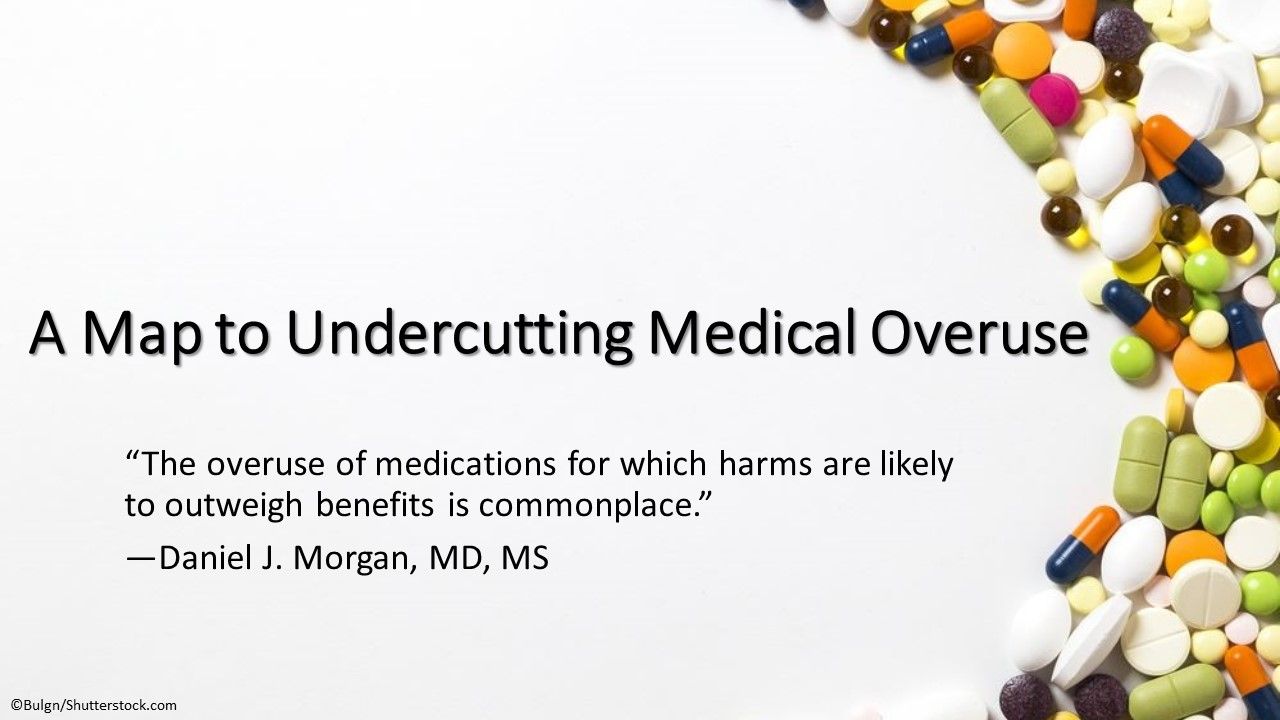
For years, medical overuse-providing adults and children with health services for which the potential harms exceed the potential benefits-has been recognized as a threat to the value and the quality of patient care. The problem is growing, but how to reduce it remains unclear.
Authors from the Memorial Sloan Kettering Cancer Center, New York, and other centers decided that framing the overuse problem in terms of the spectrum of potential patient harm could enhance clinician and patient engagement in efforts to reduce it. So they developed an evidence-based conceptual map of negative consequences of overuse of medical tests and treatments, in order to clarify the processes by which they result in negative consequences for patients and document multiple domains of negative consequences experienced by patients.
The map appears in a recently published online article in JAMA Internal Medicine. Click through the slideshow above to find a summary of how the map may help you reduce test and treatment overuse.
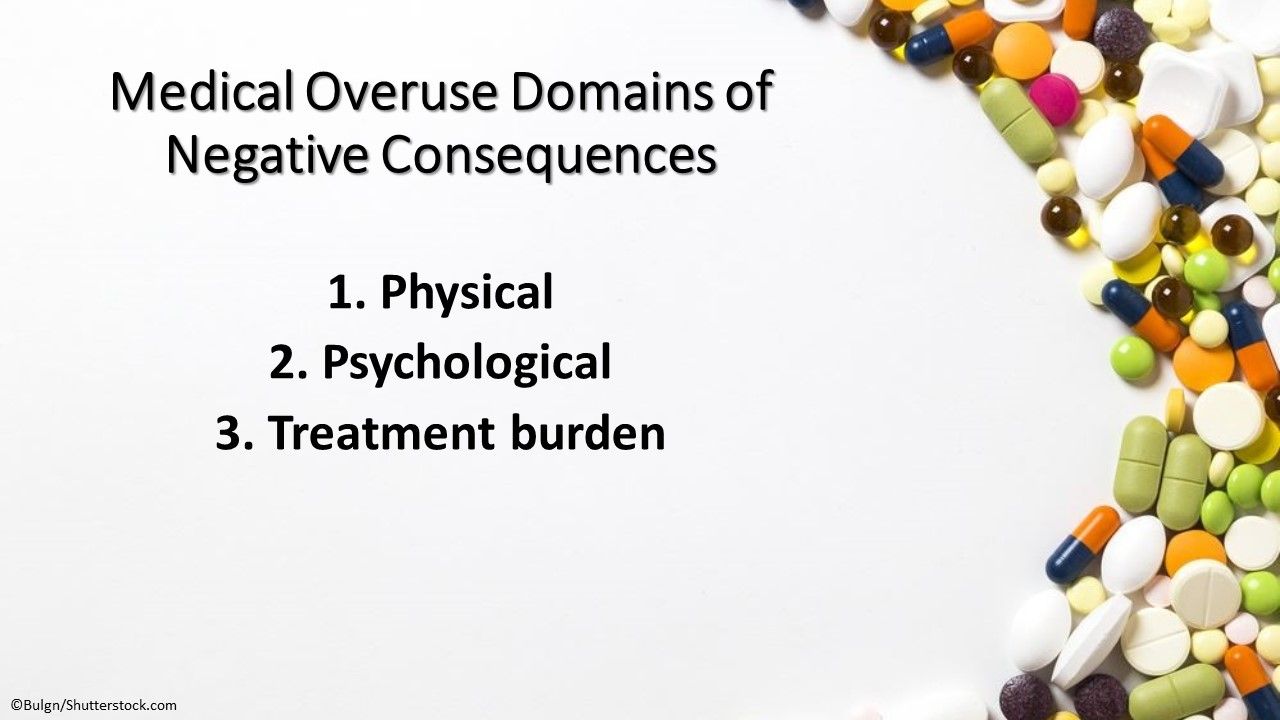
Negative Domains. Overused tests, treatments, and resultant downstream services generate 6 domains of negative consequences for patients. Here are 3 domains, with examples of consequences:
1. Physical: Temporary or permanent pain, injury, illness, or impairment. Short-term: Pain from a colonoscopy. Long-term: Disability from a complication of the procedure.
2. Psychological: Negative emotions, mood symptoms, or psychiatric disorders. Short-term: Anxiety from awaiting biopsy results. Long-term: Major depression related to a disability from a complication.
3. Treatment burden: The workload that patients must perform to manage health conditions. Short-term: Traveling to multiple appointments for overused and downstream services. Long-term: Managing chronic health conditions that arise as complications of overused procedures.
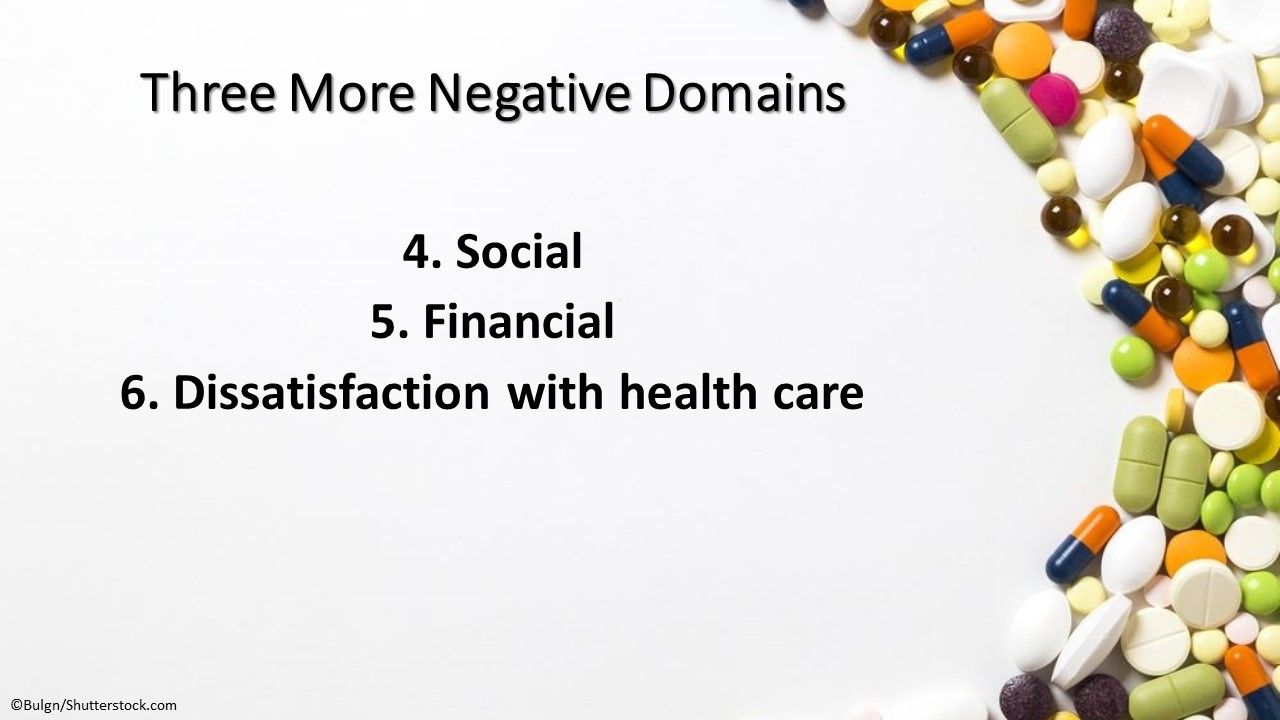
4. Social: Disruption of relationships or altered social identity or status because of a medical condition. Short-term: Loss of availability to participate in social activities because of a medical condition. Long-term: Loss of social networks because of ongoing physical problems caused by medical overuse.
5. Financial: Patients’ monetary costs from medical care. Short-term: Lost wages from time away from work. Long-term: Bankruptcy from ongoing medical costs.
6. Dissatisfaction with health care: Unhappiness with or mistrust of health care services or clinicians. Short-term: Frustration with a health care professional for recommending a colonoscopy that was not clinically appropriate. Long-term: Mistrust of health care professionals in general for fear they will provide inappropriate care.
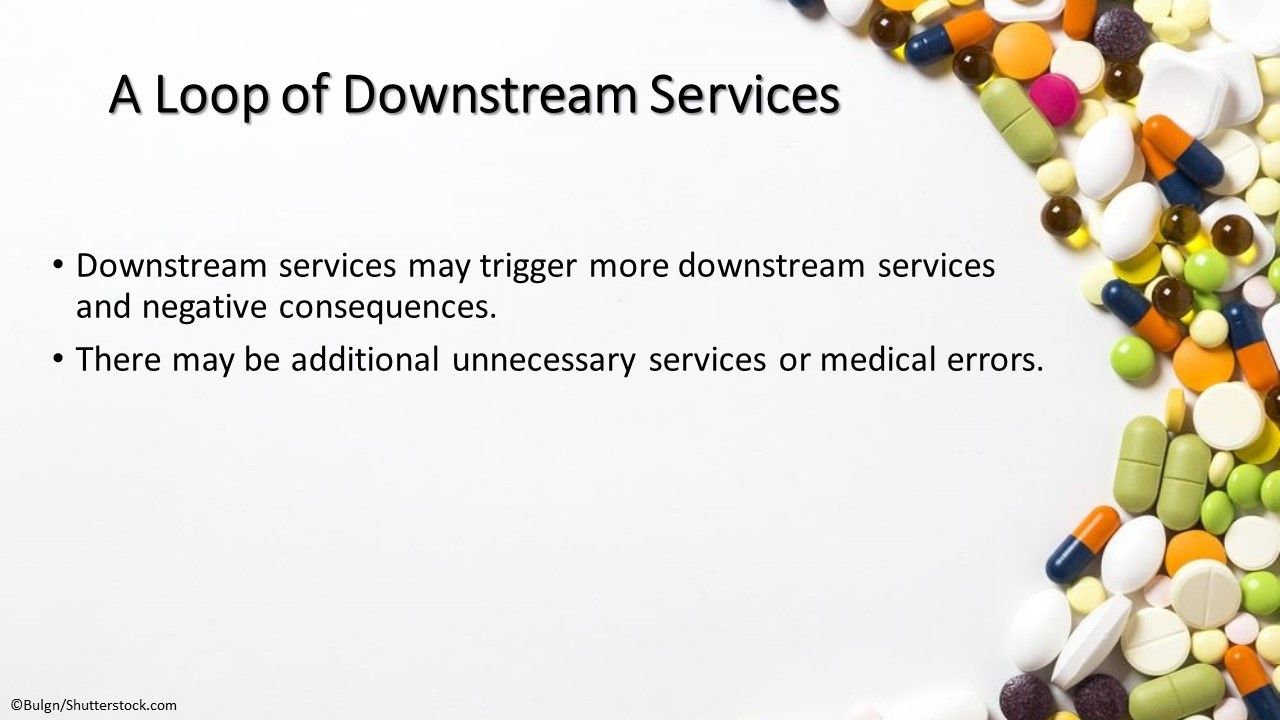
Further Down the Stream. Downstream services can trigger further downstream services that can lead to more negative consequences. They may represent appropriate responses to abnormal findings or include additional unnecessary services or medical errors, leading to negative consequences. Example: An unnecessary screening low-dose computed tomography scan revealed scattered nodules, which led to a 3-month follow-up scan, which led to a PET scan, a surgical evaluation, and another follow-up scan.
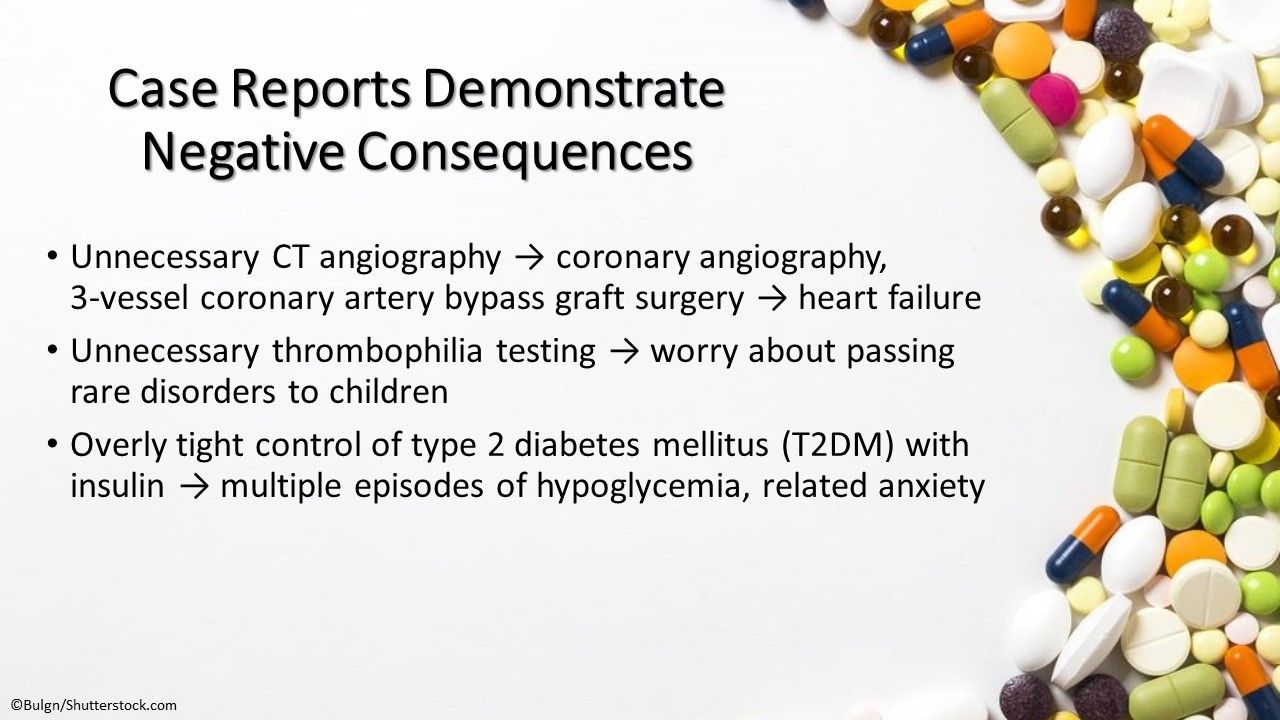
Negative Consequences in Cases. All domains from the conceptual map were represented in case descriptions. Here are a few examples from the cases:
- Physical: Unnecessary CT angiography led to coronary angiography and 3-vessel coronary artery bypass graft surgery; the CABG resulted in heart failure.
- Psychological: Unnecessary thrombophilia testing with findings that were not clinically meaningful resulted in significant worry in a patient about passing rare disorders to her children.
- Treatment burden: Overly tight control of T2DM with insulin led to multiple episodes of hypoglycemia and related anxiety; the patient felt a sense of being overwhelmed and was unable to fully engage in care.
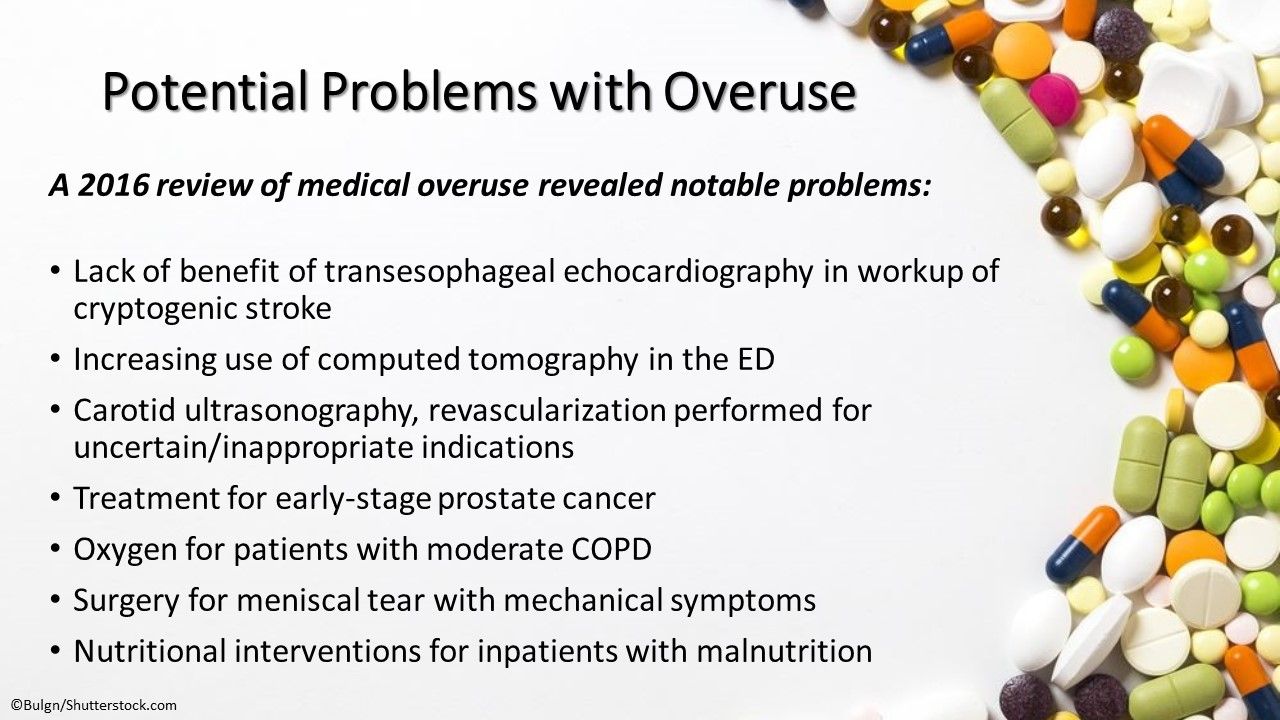
More Overuse Problems. In a 2016 JAMA Internal Medicine review of articles on PubMed related to medical overuse, the authors found a lack of benefit of transesophageal echocardiography in the workup of cryptogenic stroke, increasing use of computed tomography in the ED, and carotid ultrasonography and revascularization performed for uncertain or inappropriate indications. Services for which harms are likely to outweigh benefits: treatment for early-stage prostate cancer, oxygen for patients with moderate chronic obstructive pulmonary disease, surgery for meniscal tear with mechanical symptoms, and nutritional interventions for inpatients with malnutrition.
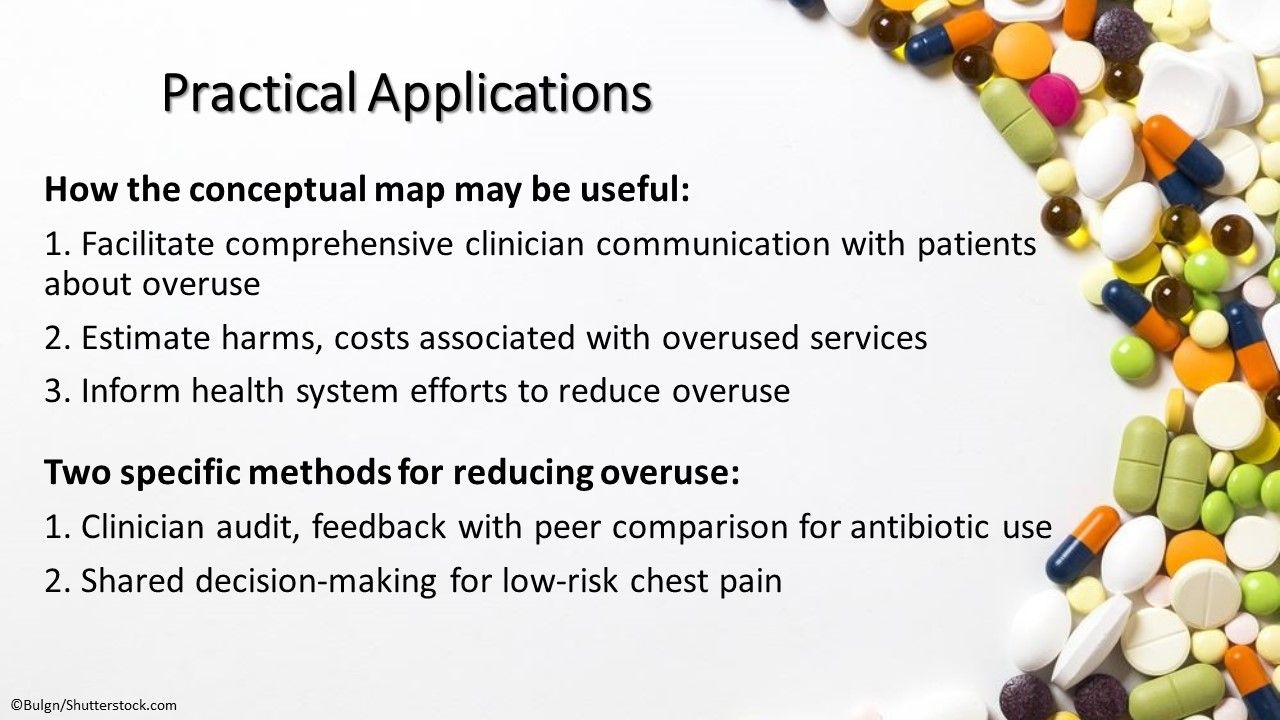
Ways to Reduce Medical Overuse. The conceptual map may be useful for facilitating comprehensive clinician communication with patients about overuse, estimating harms and costs associated with overused services, and informing health system efforts to reduce overuse. The 2016 review highlighted 2 specific methods for reducing overuse: (1) clinician audit and feedback with peer comparison for antibiotic use and (2) a practical and sensible shared decision-making tool for low-risk chest pain.
References:
1. Korenstein D, Chimonas S, Barrow B, et al. Development of a conceptual map of negative consequences for patients of overuse of medical tests and treatments. JAMA Intern Med. 2018.
2. Morgan DJ, Dhruva SS, Coon ER, Wright SM, Korenstein D. 2017 update on medical overuse: a systematic review. JAMA Intern Med. 2018;178:110-115.
